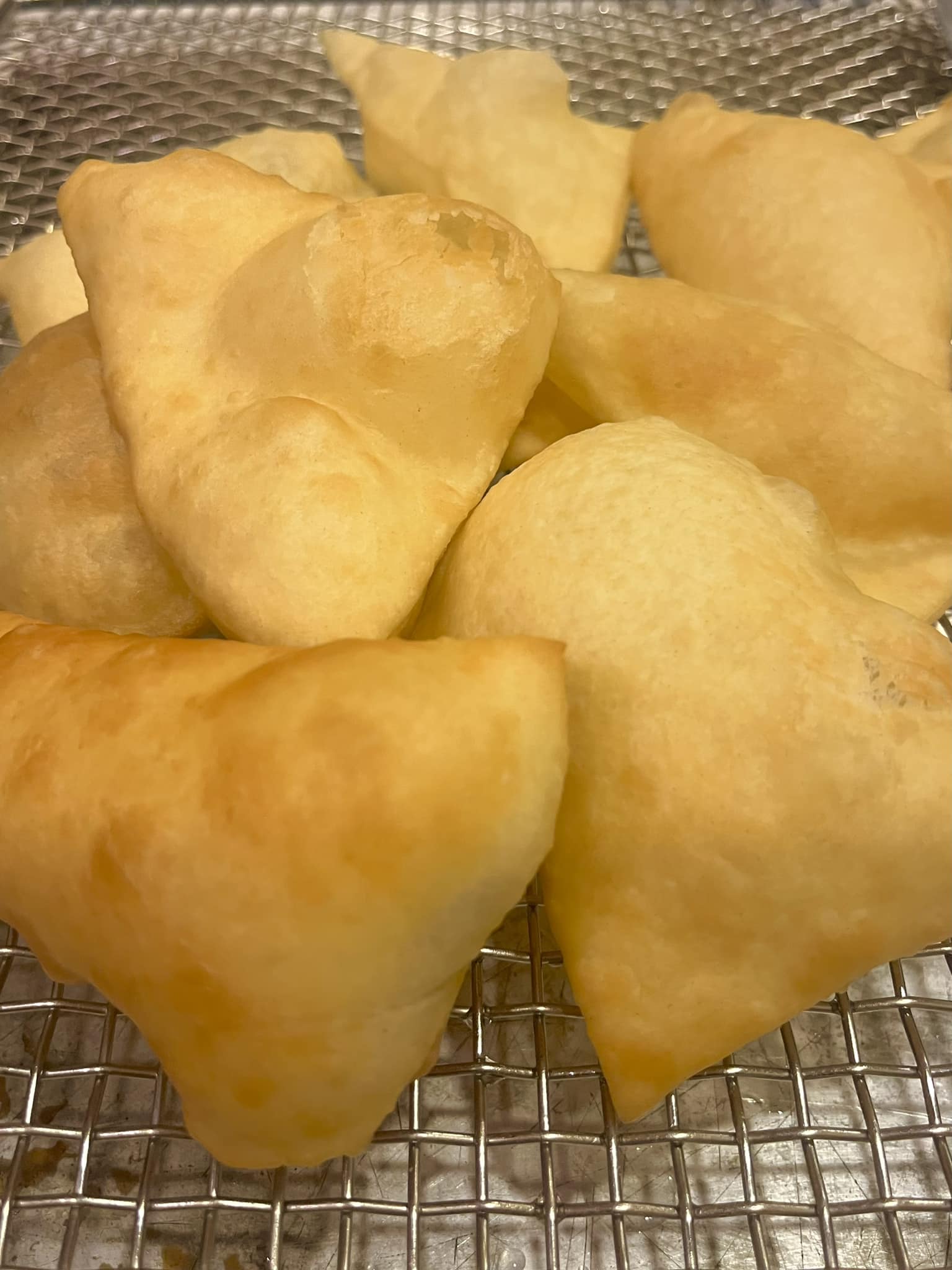Sopapillas
How to make Sopapillas

Ingredients
4 cups all-purpose flour plus additional for dusting (480g)
¼ cup vegetable shortening (51g)
2 teaspoons baking powder
1 teaspoon honey plus additional to serve
½ teaspoon salt
1½ cups warm water (105-110F) (360mL)
Vegetable oil for frying
Instructions
In a large bowl, stir together the flour, shortening, baking powder, honey, and salt until combined.
Stir in the warm water until fully combined and smooth. Cover and let stand at room temperature for 20 minutes.
On a lightly floured surface, roll out the dough into a 12×18-inch rectangle (about 1/4-inch thickness). Cut into 3-inch squares.
In a large Dutch oven, pour oil to a depth of 1 1/2-inches. Heat over medium-high heat until a deep-fry thermometer registers 375F.
Line a baking sheet with paper towels.
Working in batches, carefully add dough squares to the oil. (Don’t overcrowd the pot.) Fry, turning as needed, until golden brown on both sides and puffed for about 1 to 2 minutes. (If your dough isn’t puffing in the oil, gently tap them with your strainer to quickly submerge them in the hot oil.
This should encourage them to puff.) Let drain on the paper towels. Serve warm, drizzled with honey.
Nutrition Information:
Serving Size: 1 sopapilla
Calories: 110 kcal | Total Fat: 4 g | Saturated Fat: 1 g | Cholesterol: 0 mg | Sodium: 80 mg | Total Carbohydrates: 17 g | Dietary Fiber: 1 g | Sugars: 1 g | Protein: 2 g
Frequently Asked Questions:
Can I use a different type of flour in this recipe?
Yes, you can experiment with different flours, such as whole wheat flour or a mix of flours, but keep in mind that it might affect the texture and taste of the sopapillas. All-purpose flour is traditionally used for its versatility and ability to create a light and crispy result.
Can I use butter instead of vegetable shortening?
You can use butter as a substitute for vegetable shortening, but it might alter the texture and flavor slightly.
Shortening tends to create a flakier result, while butter adds a rich flavor. The choice depends on your preference.
What’s the purpose of letting the dough stand for 20 minutes?
Letting the dough rest allows the gluten to relax, making it easier to roll out and resulting in softer sopapillas.
It also gives the flour time to fully absorb the liquid, leading to a smoother and more cohesive dough.
Can I bake these instead of frying?
Traditionally, sopapillas are fried to achieve their characteristic crispy and puffed texture. Baking them might result in a different texture and flavor.
However, you could try baking them at a high temperature (around 400°F or 200°C) on a parchment-lined baking sheet for a lighter version.
What’s the best way to store leftover sopapillas?
Sopapillas are best enjoyed fresh and warm, but if you have leftovers, store them in an airtight container at room temperature for a day or two.
Reheat them in an oven or toaster oven for a few minutes to restore some of their crispiness before serving.
Can I make the dough ahead of time and refrigerate it overnight?
While the dough is best prepared fresh, you can refrigerate it for a short time, like a few hours, before rolling and frying.
If left overnight, the dough might change in texture and not puff as well during frying.
What’s the ideal oil temperature for frying sopapillas?
The oil should be heated to around 375°F (190°C) for frying sopapillas.
Use a deep-fry thermometer to monitor the temperature and ensure that the sopapillas cook evenly and puff up properly.
Can I use a different sweetener instead of honey?
Yes, you can substitute honey with other sweeteners like maple syrup or agave nectar.
Keep in mind that it might slightly alter the flavor of the sopapillas.
Is there a gluten-free version of this recipe?
Creating a gluten-free version of sopapillas can be a bit challenging due to the nature of the dough.
You might need to experiment with gluten-free flours and binders to achieve a similar texture and taste.
Can I use a different method for cooking the sopapillas besides frying?
Frying is the traditional method for making sopapillas, but you can experiment with baking them at a high temperature for a healthier option.
However, baking might not yield the same crispy and puffed results as frying.